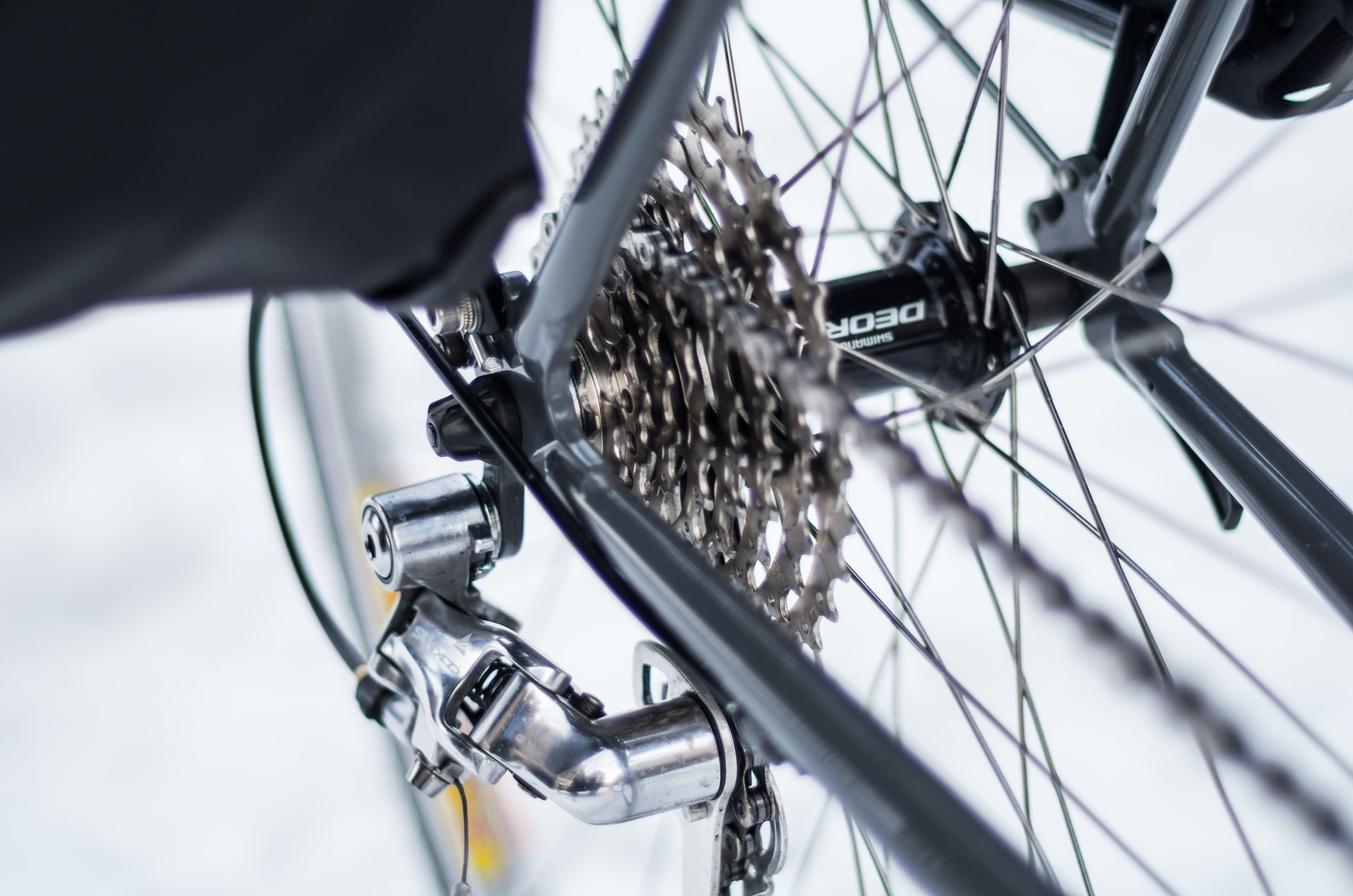Having the correct gear setup for any project or task is essential for efficiency and can save you time, money, and energy. But how do you know what the correct structure is? Evaluating your gear setup for efficiency is crucial in ensuring you set yourself up for success. In this article, we’ll discuss why considering your gear setup is essential and some tips to help you make sure your setup is the most efficient it can be.
Defining Goals & Needs
The first step in evaluating your gear setup for efficiency is identifying your specific requirements. Your first step is determining what activities you anticipate your gear setup will be used for. For example, if you are a snowboarder, you will need different gear than a rock climber. Additionally, will you be camping, backpacking, or engaging in competitive sports? Once you have identified the activities you will be using your gear setup, you can evaluate what items you need to achieve maximum efficiency.
Analyzing Gear Performance
Once you have identified the needed gear, you should analyze the items’ performance. Are your items lightweight and durable? Are your items up-to-date and technologically advanced? Do your items require frequent maintenance? Considering your activities, the version of your items will be the primary determining factor of how efficient your gear setup will be.
Quantifying Gear Efficiency
Now that you have identified and analyzed the performance of your gear items, it is time to quantify the efficiency of your gear setup. Some questions to ask yourself include: How much time will it take to assemble and disassemble my items? How easy is it to transport my items? How quickly can I set up my things? How much does my gear setup weigh? Answering these questions will help you determine your gear setup’s overall efficiency.
Meeting Efficiency Goals
Once you have identified and analyzed your gear and calculated the efficiency of your gear setup, it is time to assess if your current setup is meeting your efficiency goals or if changes need to be made. Do the items in your current setup require too much time, energy, or money? If so, changes may need to be made to ensure that your gear setup meets your efficiency goals. Additionally, if your items are not meeting your performance requirements, you may need to upgrade to more efficient things.
Maximizing Gear Efficiency
Evaluating your gear setup for efficiency can be a challenging but worthwhile task. By assessing your specific goals and needs, analyzing your items’ performance, quantifying your setup’s efficiency, and ensuring that your structure is meeting your efficiency goals, you can maximize the efficiency of your gear setup. When evaluating your gear setup for efficiency, it is essential to remember that the most efficient configuration is the one that best meets your needs and delivers the performance that you require.
Research & Analysis
When it comes to enhancing efficiency in your workstation, the quality of your gear plays a vital role. To get the most out of your gear setup, it is crucial to analyze your equipment and identify areas that need improvement. Evaluating your gear setup for efficiency requires careful research and assessment of the components.
Investigating Your Hardware
When assessing your gear setup, it is crucial to establish its primary components. Investigate what your current hardware includes, from monitors and keyboards to graphics cards or processors. Consider the frequency you use your gear, as this can help you determine what should remain and what should be replaced. It is essential to note the performance of each piece of equipment and whether performance is meeting your expectations.
Assessing Needs for Performance Improvements
To realize the full potential of your gear setup and enhance efficiency, assessing the hardware for its level of performance is essential. Identify any hardware that may have become outdated or inadequate and inspect for any signs of wear and tear. This can become the foundation for potential upgrades, leading to higher efficiency. Knowing hardware vulnerabilities or bugs can help avoid potential threats or system crashes.
Comparing and Contrasting Alternatives
When the search for potential upgrades, research different options and compare which provide the best features and performance. Consider factors such as cost, quality, durability, and gear compatibility. When needed, consult a professional to help in decision-making and ensure the best gear is acquired, and safety protocols are followed.
Evaluating the Set-up for Efficiency
Once you have acquired the new hardware and established the setup, it is vital to assess its efficiency level. Take the time to evaluate each component and measure the performance you achieve from the gear. Additionally, consider testing the operation of the gear and troubleshooting any issues or lag in performance. Careful examination of the gear setup allows you to determine the most efficient use of the hardware and establish the most suitable configuration for your gear.
Research and analysis make it possible to fully realize your gear setup’s potential and gain optimal efficiency levels. Through careful investigation and assessment of the available alternatives, you can identify which components should remain and which should be upgraded to enhance productivity.
Choosing the Right Gear
Selecting the right gear for a job is critical for the gear setup evaluation process. When selecting equipment, many factors should be considered, and the right combination of factors can make a big difference in the system’s overall efficiency. The type of gear, size, material, and quality must all be considered.
Type of Gear
The first step when choosing the right gear is to determine what type of gear is required. For example, a hoist and cable system may be the most appropriate option if the goal is to lift an object. A pulley system may be best if the goal is to transmit power. Selecting the correct type of gear for the job is vital to achieving the desired result.
Size
The size of the gear is also an essential factor to consider. Too small of a gear may not have the power needed to lift the desired load, or it may be strained to the point where it could break or malfunction. Too large of gear could be expensive and may not fit into the desired space. The gear size must be chosen carefully to provide enough power to do the job without being too large or expensive for the application.
Material
The material of the gear is also essential. Depending on the type of environment in which the gear will be used, a particular material may be more appropriate. For example, if the gear is going to be used in a wet environment, stainless steel or coated fabric may be best to prevent corrosion. Selecting a suitable material to ensure the gear will last and perform properly.
Quality
The quality of the gear is also essential to consider. Cheap, low-grade gears may not last as long and could malfunction, causing a costly disruption in operations. Selecting a higher quality gear is vital to ensuring that the gear will perform as expected and has a long lifetime.
Selecting the right gear is essential in the evaluation process of gear setup. By carefully considering the type of gear, size, material, and quality, optimizing the system for maximum efficiency is possible.
Implementing & Testing
When evaluating your gear setup for efficiency, the first step is to ensure that you use the best gear for the job. Consider your specific needs and the conditions you will be working in. Consider the weight, size, and type of gear needed for a particular task or challenge. Depending on the job, you may need different tools, clothing, or supplies.
Making Adjustments
Once you have chosen the right gear for the task, you should make any necessary adjustments to ensure that your gear works as efficiently as possible. This could mean tightening straps on a backpack, adding padding to prevent abrasions, or ensuring that your clothing fits properly. Making sure your gear is adequately adjusted can help you avoid problems and discomfort down the road, saving you time and energy.
Conducting a Stress Test
Before implementing your gear setup for efficiency, it is vital to conduct a stress test. This includes running, climbing, or hiking with your gear to ensure it functions properly. Pay close attention to how the gear feels on your body. Are the straps digging into your shoulders? Do the zippers get stuck? If you notice any issues during the test, make the necessary adjustments before you embark on your next adventure.
Testing in the Field
Once you have conducted your stress test, you should test your gear in the field. This is especially important if you embark on a long or challenging journey. Set out with your gear and assess how it is performing in different conditions. This could include testing your gear in extreme temperatures or wet or muddy environments. Pay close attention to how the gear performs and adjust accordingly.
Reviewing and Refining
Once you have tested your gear in the field, reviewing and refining your setup for efficiency is a good idea. Compare notes from the stress test and field test to identify areas that need improvement. Try different combinations of clothing and gear to find the most efficient setup for your specific needs. Every little tweak can help improve the performance of your gear and make your next adventure more enjoyable.
Maintaining Optimal Efficiency
It is essential to monitor your gear setup to ensure its efficiency regularly. This helps to keep your gear running properly and optimally. There are several ways to monitor the performance of your gear setup, such as taking readings on the temperature of your gear and checking the voltage settings. You should also check the power consumption of your gear and see if there are any areas where it can be improved.
Upgrading Equipment for Optimal Efficiency
Consider upgrading your equipment if your gear is not running as efficiently as you would like. Investing in a higher-quality gear setup can help you improve your overall efficiency and save you money in the long run. Newer gear can also be more efficient and last longer.
Regular Maintenance for Optimal Performance
In addition to upgrading your gear, regular maintenance is essential for keeping your gear running optimally. Cleaning, lubricating, and tightening your gear should be done regularly to ensure that it runs as efficiently as possible.
Using the Right Accessories For Optimal Efficiency
Using the right accessories can also help you maintain optimal efficiency in your gear setup. Investing in proper cables and connectors that match the components of your gear setup is critical to ensure that you are getting the most out of your equipment.
Adopting the Right Habits for Optimal Efficiency
In addition to monitoring and maintaining your gear setup, adopting the proper habits can help you maintain optimal efficiency. Make sure to turn off your gear when not in use and avoid running too many applications simultaneously. This will help you keep your gear running at its peak performance.
Being Aware of Potential Issues with Gear Setup Efficiency
It is essential to be aware of potential issues that may arise with the efficiency of your gear setup. Keep an eye out for any signs of wear and tear, and replace any parts that are no longer functioning correctly. Doing so will help you maintain optimal efficiency in your gear setup.
Ways To Improve Your Gear Set-up
When evaluating your gear setup for efficiency, there are a few key areas to consider. These include defining your goals, researching the best equipment for your needs, and understanding the various configurations available for setting up your gear. By taking the time to review and properly configure your gear, you can optimize your setup for the most efficient performance. From selecting the best tools for the job to adjusting your settings to tailor the environment to your needs, devising a well-thought-out gear setup can help ensure you get the most out of the equipment you use. With the proper structure, you can save time and money while optimizing your workflow.






Leave a reply